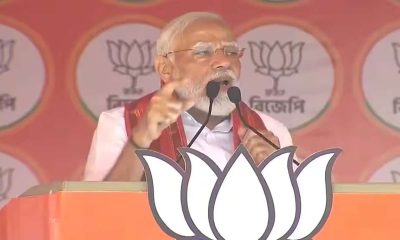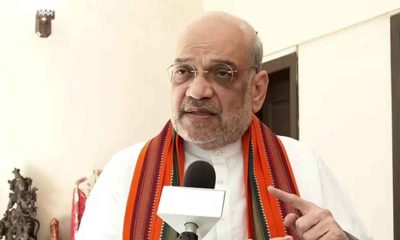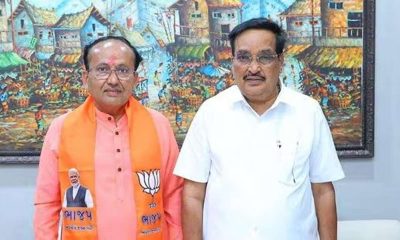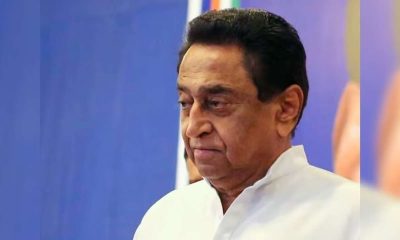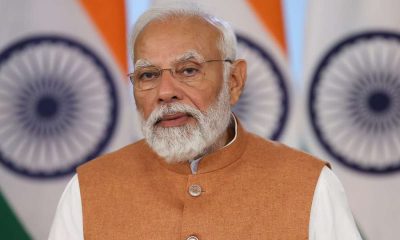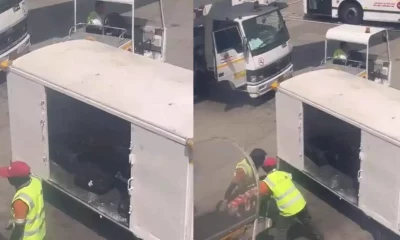India News
Enemy’s Enemy Is My Friend: BJP, CPM Target Mamata
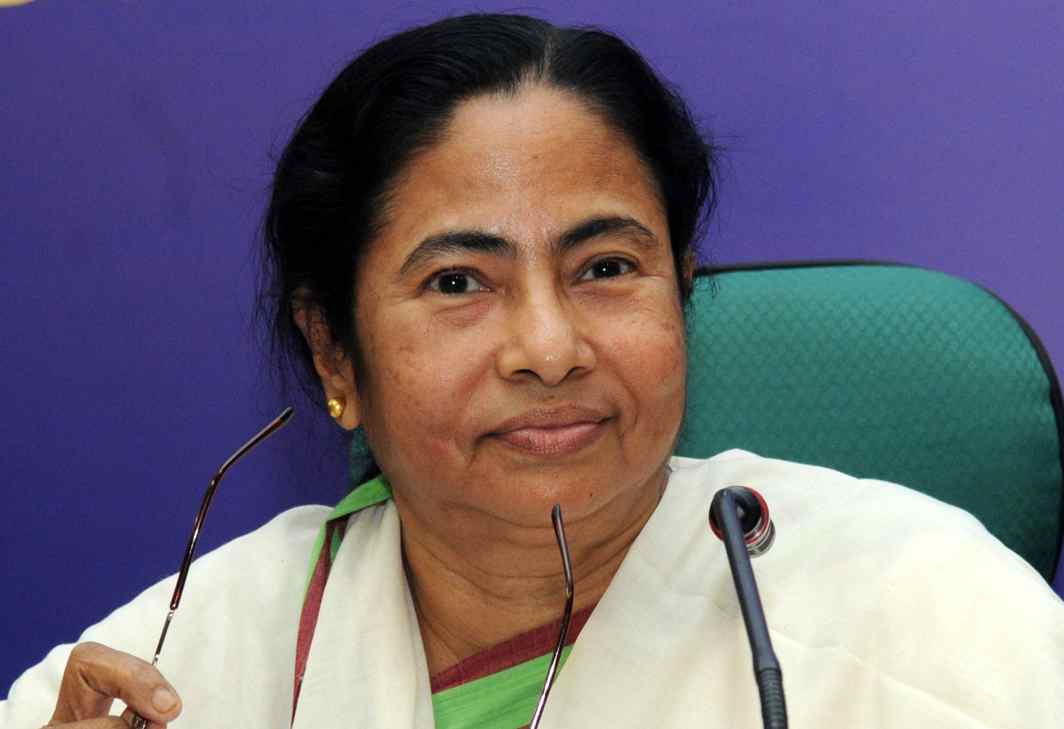
By Saeed Naqvi
On the eve of the May 2016, West Bengal Assembly elections, Arun Jaitley shared his campaign experiences with some editors. When he attacked Mamata Bannerjee and the Left-Congress Front in equal measure, the crowd’s response was tepid. When he attacked TMC for 60 percent of his speech, there was some applause. But when his speech was 75 percent invective against the TMC, the applause was thunderous.
The editor who passed on these “findings” to me was then a key figure in the Kolkata establishment. He was amplifying something he liked to believe. So opposed to Mamata was he that he claimed some credit for helping stitch together what was patently an absurd arrangement: Congress and the CPM would hold hands in Bengal, but fight each other in Kerala. They were trounced.
Jaitley’s unflattering report about Mamata’s electoral fortunes can be easily explained. His meetings, obviously organized by RSS cadres consisted of crowds who were presumably anti Mamata. His narrative also revealed that, in charting out a future in Bengal, the BJP saw Mamata as a much more formidable obstacle than the Congress-Left combine.
That outcome is precisely what the BJP is up against now that Amit Shah is preparing the turf for the 2019 elections.
In this framework, how does the communal violence following Bashirhat play itself out? First, it must be registered that there have been a dozen or so clashes in the state after Mamata’s reelection. It must be said to the credit of CPM’s 36 year rule: Communal riots were almost non- existent. Some of what is happening now is clearly part of the BJP’s effort to create an atmosphere conducive to communal polarization.
It is difficult to see how the BJP can profit from efforts at Hindu consolidation in a state with anywhere between 30 to 35 percent Muslim population. In the absence of a reliable census, these are the figures most parties privately cite. Promoting communalism would leave this bloc vote consolidated exactly where it is: behind Mamata.
Considering that this very same vote stood four square behind the CPM for 34 years, mostly under the charismatic Chief Ministership of Jyoti Basu, its support for Mamata need not theoretically be seen as permanent.
This probably is the desperate hope the CPM nurses. To enhance Mamata’s vulnerabilities it has thrown its lot with the BJP: an enemy’s enemy is my friend.
Just as the self defeating formula, CPM + Congress, for May, 2016 elections was credited to the CPM secretary General Sitaram Yechury, the strategy of attacking TMC just when it is in RSS-BJP line of fire, is widely believed to be the line enunciated by former party Secretary General Prakash Karat.
Quite clearly the party has not yet digested the harsh reality that it was trounced by TMC, that Buddhadeb Bhattacharjee was West Bengal’s Gorbachev. In the rush to reform both had lost control.
The Marxist government’s conflict with peasants in Nandigram in March, 2007, set into motion a series of events which ultimately dethroned the CPM. Karat’s diagnosis was that the anger of Muslim peasants had been stoked by a combination of Jamiat, TMC and Naxalities.
Muslim peasants, fearful of losing their lands for a Special Economic Zone, was the basis on which CPML groups worked hard to mobilize a powerful movement. Jamiat may have played a role since the peasants were Muslim. The only party in the fray to take electoral advantage was the TMC.
It was a masterstroke of political opportunism by Mamata. Having lost the 2006 assembly election, she turned her fortunes around using Singur and Nandigram as fulcrums.
A leader’s political durability in Kolkata can sometimes be measured by political currents in neighbouring states – Tripura for instance.
Possibly inspired by Mamata’s rise, the President of the Congress in Tripura, Sudip Roy Burman switched to the TMC. But when he saw the Modi wave sweeping across UP and the TV channels, he turned up in Guwahati to promise support the BJP’s Presidential candidate Ram Nath Kovind.
Now, Agartala is rife with rumors that six TMC MLAs are likely to join the BJP in the coming weeks. In other words, the BJP, which had no member in the Assembly, will suddenly have six.
This sudden inflation of BJP legislators will have ample moral support from the rabidly anti Muslim Governor Tathagata Roy. His recommendation on how Muslim terrorists should be punished, borders on the Macabre: “Wrap them in pigskin and bury them face down in Pig’s excreta.”
Tripura has been under CPM rule for the past 32 years. But the anti CPM vote mostly rallied around the Congress in the past. As elsewhere in the country (West Bengal too) the Congress has reduced itself to a virtual non entity in the state. At the grassroots, this space is being occupied by the energetic BJP cadres. Taking a holistic view, these must be seen as some of the chinks in the TMC armour.
2024 Lok Sabha Elections
PM Modi calls for high voter turnout in second phase of Lok Sabha elections 2024, says your vote is your voice
Prime Minister Narendra Modi urges citizens to participate in record numbers during the second phase of polling for the Lok Sabha Elections 2024.
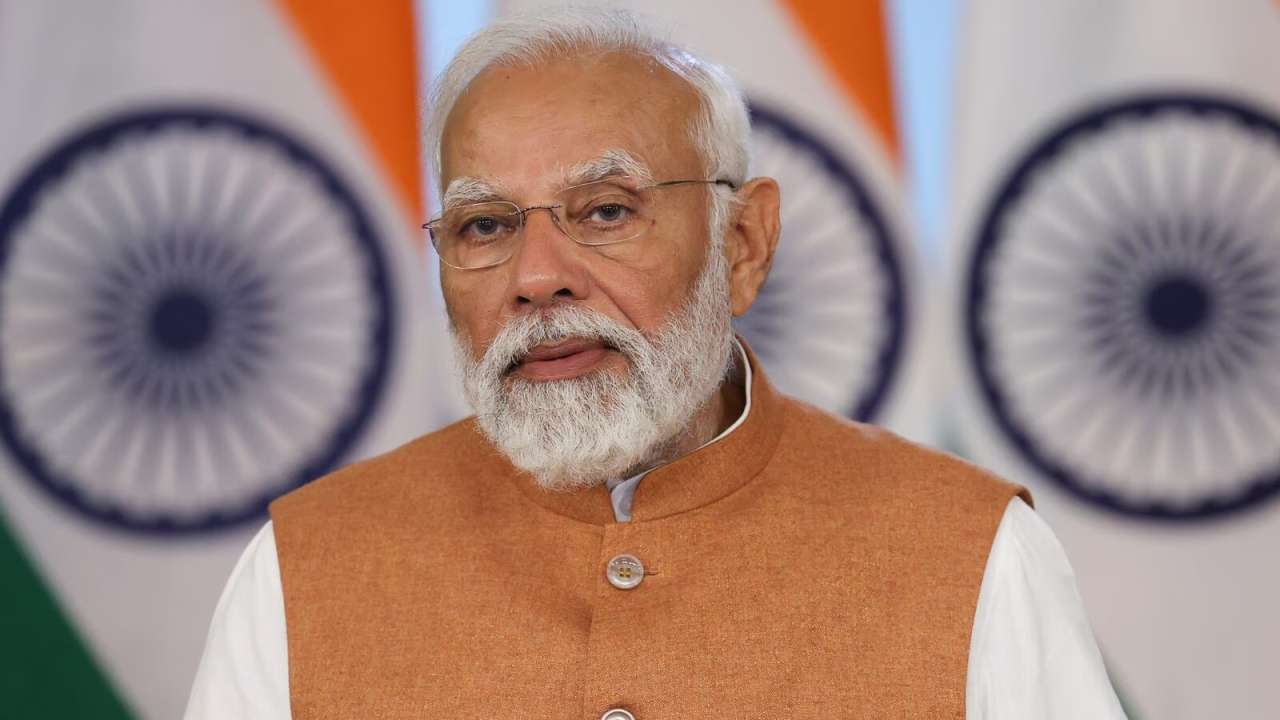
Prime Minister Narendra Modi took to social media as the second phase of voting for the Lok Sabha Elections of 2024 got underway across the country to encourage voters to cast votes in huge numbers. PM Modi emphasized in his speech the value of voting in preserving democracy and notably urged women and young people to cast votes.
Taking to social media X, formerly Twitter, PM Modi wrote, urging everyone in constituencies to participate in record numbers in today’s second phase of the Lok Sabha elections. He said our democracy is strengthened by high voter turnout. He especially urged female and youth voters to cast votes in large numbers. Your vote is your voice, he added.
It is important to remember that 88 Lok Sabha constituencies—spread among 13 states and Union Territories—are presently holding polls. Twenty seats in Kerala, fourteen in Karnataka, thirteen in Rajasthan, eight in Uttar Pradesh and Maharashtra, six in Madhya Pradesh, five in Assam and Bihar, three in Chhattisgarh and West Bengal, and one in each of Tripura, Jammu & Kashmir, and Manipur are currently up for election. Notably, the untimely death of a Bahujan Samaj Party (BSP) candidate has resulted in the Madhya Pradesh constituency of Betul being spared from voting on April 26.
Meanwhile, Chief Election Commissioner Rajiv Kumar emphasized the thorough planning that has taken place over the previous two years and reassured the public of careful security measures at every voting place. They have been preparing for the last two years, he said. At each booth, the arrangements are ready. Everything has been prepared for the voters, including fans and drinking water. Voters must turn out to cast their votes. Safety has been considered. There is zero information available anywhere regarding violence. However, there will be forces at every booth.
2024 Lok Sabha Elections
Bollywood actor Neha Sharma campaigns for her father Ajit Sharma in Bhagalpur, Bihar
The Bollywood actor posted a video on her Instagram handle which showed her journey through various districts of Bihar, including Kishanganj, Banka, Purnea and Katihar. She was dressed in a traditional salwar kameez and was seen greeting and encouraging the public to cast their votes.
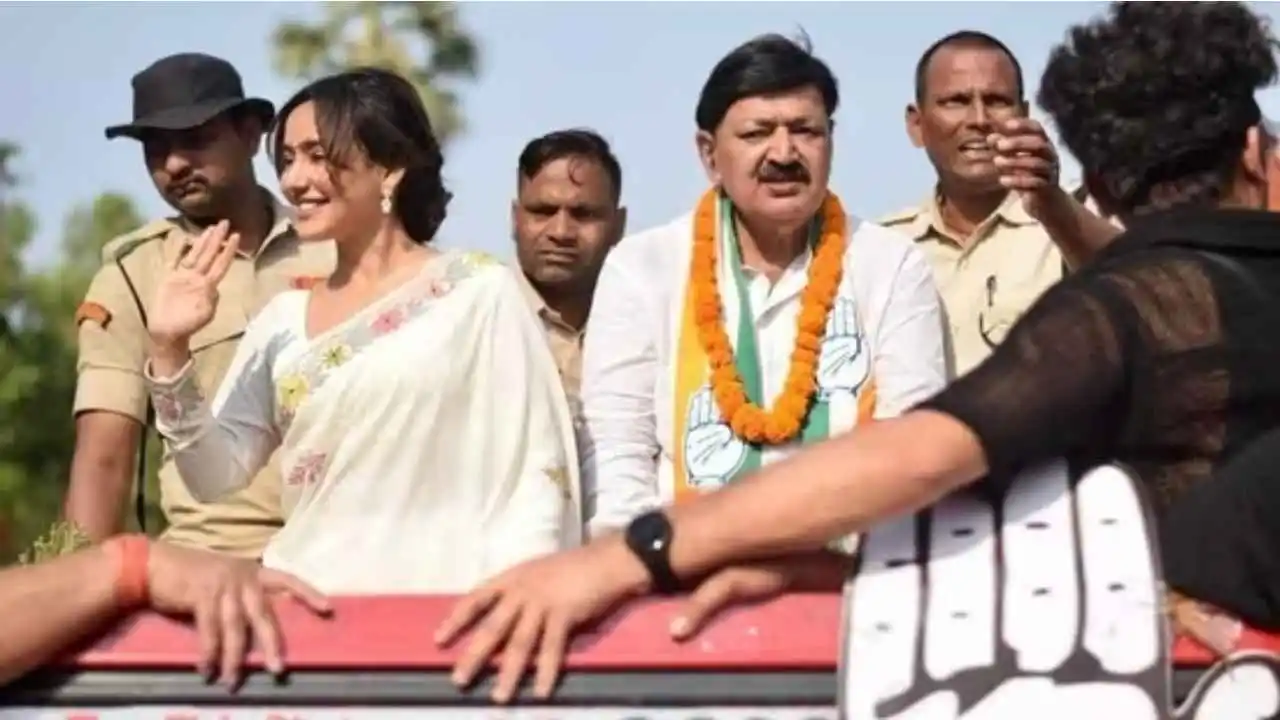
Bollywood actor Neha Sharma’s recent participation in a roadshow in Bihar has taken the internet by storm. Sharma, known for her roles in films like Tum Bin 2 and Crook, was seen supporting her father, Ajit Sharma, who is contesting from Bhagalpur Lok Sabha seat on a Congress ticket. The roadshow came amid speculations that the actor might enter politics. But, it is now clear that she was just campaigning for her father.
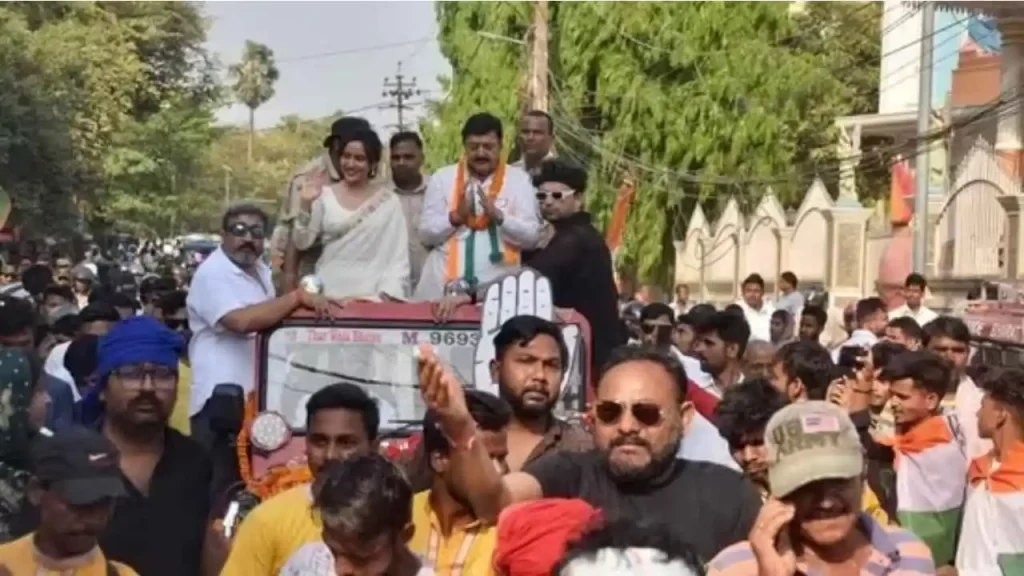
The Bollywood actor posted a video on her Instagram handle which showed her journey through various districts of Bihar, including Kishanganj, Banka, Purnea and Katihar. She was dressed in a traditional salwar kameez and was seen greeting and encouraging the public to cast their votes.
The actor received a warm reception and love from a large crowd in Pirpainti and Kahalgaon during her roadshow. She wrote on Instagram that it is said when someone gives one a place in their heart, then they live there forever. She said her heart is full of all the love and support she was receiving from the people. She thanked the people for the warm welcome she got in Pirpainti and Kahalgaon. Aapka pyar sar ankhon par.
Another video, circulating on social media showed the actor actively participating in her father’s election campaign in Bhagalpur. The election to the Bhagalpur Lok Sabha seat is set to take place in the 2nd phase on April 26. Ajit Sharma is representing the Congress and is up against JDU’s Ajay Kumar Mandal in this seat.
Earlier, there had been rumours and speculations that Neha Sharma might join politics. But many reports have clarified that she is not making her political debut yet. The Bollywood actor had been offered the opportunity to join politics by her father Ajjit Sharma but she is currently focusing on her acting career.
Education
Farmer’s son Nilkrishna Gajare Nirmalkumar from Maharashtra scores 100 NTA score in IIT-JEE Mains 2024
Nilkrishna Gajare’s father is a farmer and had to discontinue his own education after Class 12 as he faced financial difficulties. Gajare faced financial challenges growing up. However, his unwavering dedication and strategic approach to preparation set him apart from the crowd.
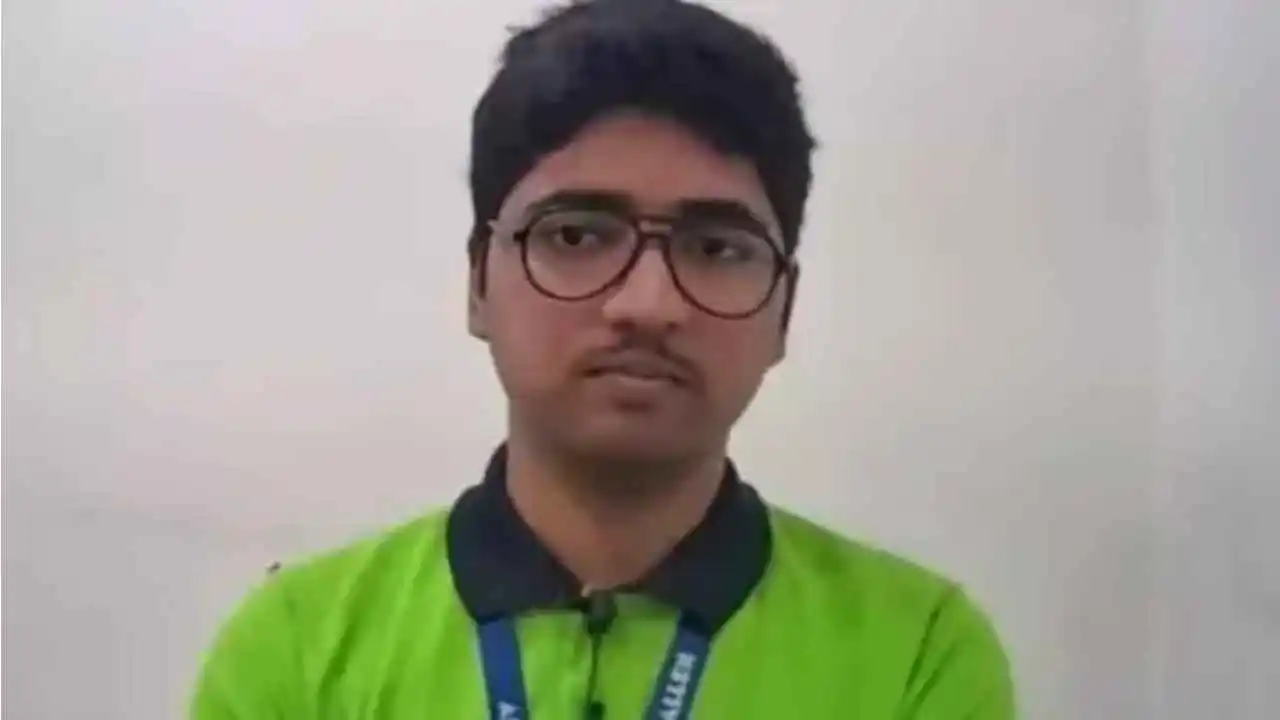
Nilkrishna Gajare, who hails from Maharashtra’s Washim, achieved an extraordinary feat by securing a perfect score of 100 in the JEE Main 2024 examination. His journey from humble beginnings to the pinnacle of success is a source of inspiration for many people.
Nilkrishna Gajare’s father is a farmer and had to discontinue his own education after Class 12 as he faced financial difficulties. Gajare faced financial challenges growing up. However, his unwavering dedication and strategic approach to preparation set him apart from the crowd, which resulted in his remarkable achievement of emerging as topper of one of India’s toughest Engineering entrance exams.
Nilkrishna Gajare had a strategic plan that helped him succeed in IIT-JEE 2024. According to Nilkrishna persistence is important and one should never stop trying until they understand a topic. He said being curious and asking questions are important traits of a good student. He said one should not be ashamed of asking questions.
Nilkrishna spent around 10-15 hours every day studying on his own for the JEE Main exam. He mentioned that he used his class notes for Physics and Physical Chemistry. For organic chemistry and inorganic chemistry, he relied on both notes and practice questions.
As for Mathematics, he believed that practicing regularly was the most important thing for him. Other interests of Nilkrishna include archery. He has participated at both state and national levels, and he finds joy in the sport. He said archery helps him understand the importance of focusing his attention on his goals. Nilkrishna likes watching movies and said they are a great source of enjoyment and relaxation.
He likes to watch a movie after exams and occasionally treats himself to one each week too. Gajare aims to keep up the pace for the JEE-Advanced exam and hopes to get into the IITs. He said he wants to secure admission in IIT-Bombay in the computer science branch.
-

 Entertainment24 hours ago
Entertainment24 hours agoBollywood stars Salman Khan, Alia Bhatt, Rekha, Sonakshi Sinha, Aditi Rao Hydari attend Sanjay Leela Bhansali’s Heeramandi premiere
-

 Cricket news18 hours ago
Cricket news18 hours agoTelugu superstar Mahesh Babu meets SRH captain Pat Cummins, says it is an absolute honour
-
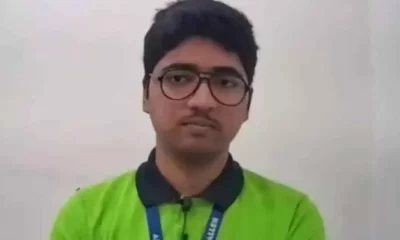
 Education22 hours ago
Education22 hours agoFarmer’s son Nilkrishna Gajare Nirmalkumar from Maharashtra scores 100 NTA score in IIT-JEE Mains 2024
-
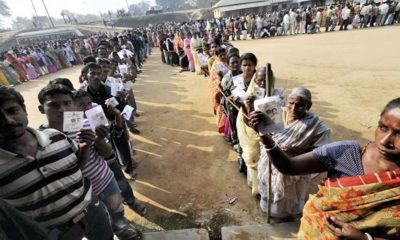
 2024 Lok Sabha Elections23 hours ago
2024 Lok Sabha Elections23 hours agoBihar: Election Commission extends voting timings for 4 Lok Sabha seats due to heatwave
-

 Entertainment20 hours ago
Entertainment20 hours agoAamir Khan to begin shooting in Delhi for Sitaare Zameen Par next month
-
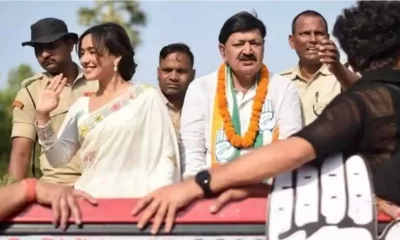
 2024 Lok Sabha Elections20 hours ago
2024 Lok Sabha Elections20 hours agoBollywood actor Neha Sharma campaigns for her father Ajit Sharma in Bhagalpur, Bihar
-

 Cricket news19 hours ago
Cricket news19 hours agoAB De Villiers criticizes RCB’s decision to let go Yuzvendra Chahal, says it was a hearbreaking moment
-
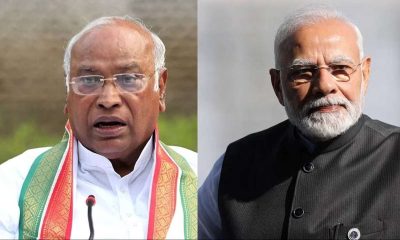
 2024 Lok Sabha Elections18 hours ago
2024 Lok Sabha Elections18 hours agoMallikarjun Kharge writes to PM Modi seeks time to explain Congress’s Nyay Patra

